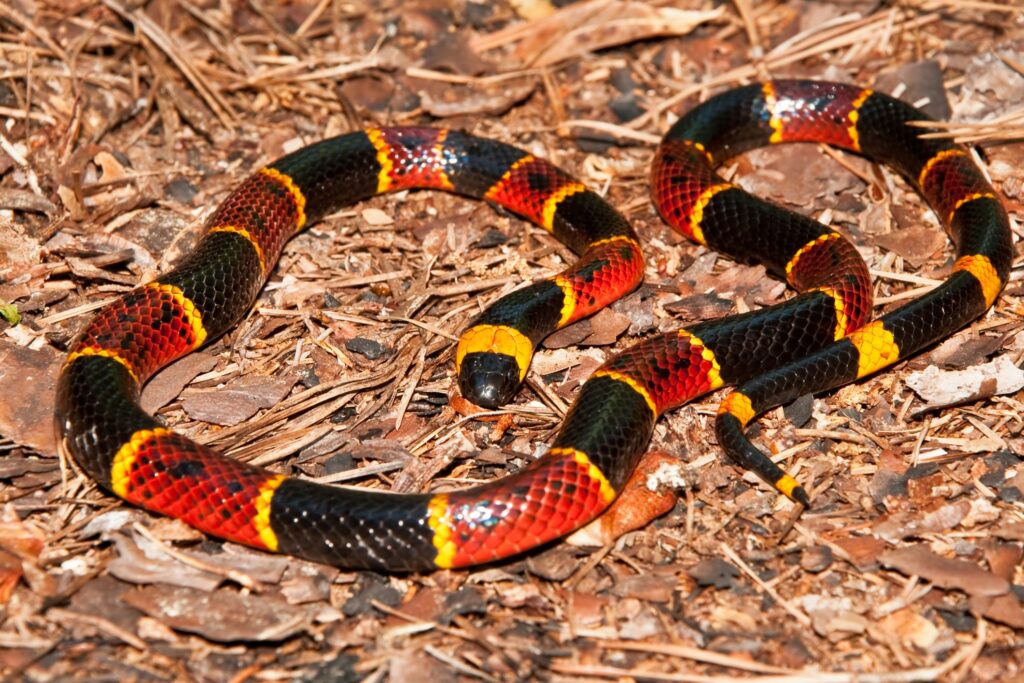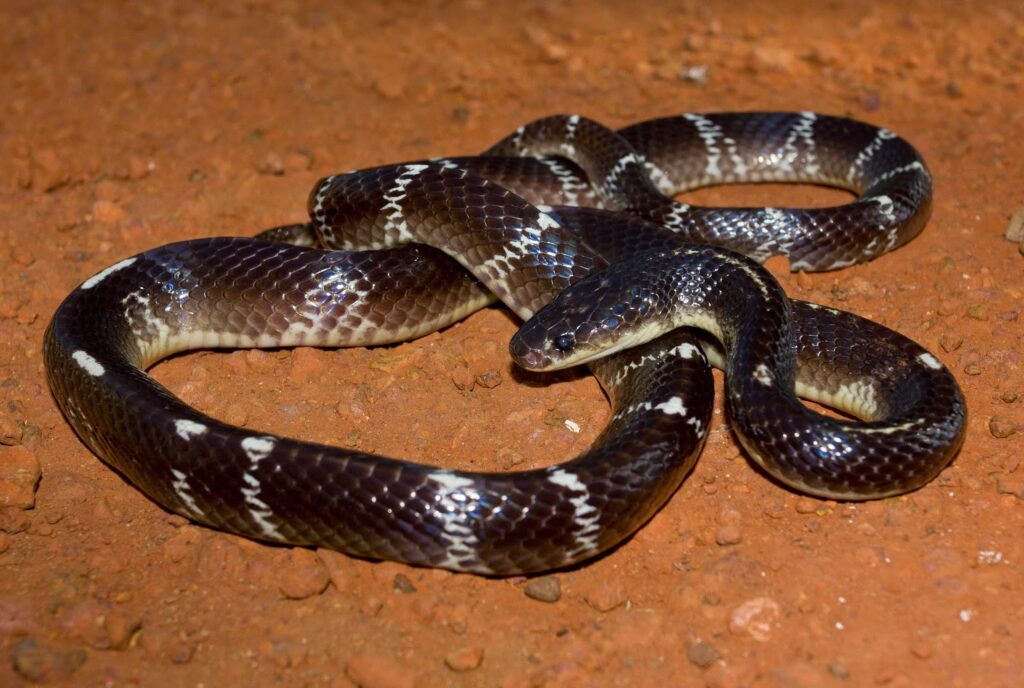Table of Contents
ToggleIntroduction

With their serpentine grace and enigmatic presence, Are Snakes Poisonous have long been surrounded by myths and misconceptions, particularly regarding their toxicity. The terms ‘venomous’ and ‘poisonous’ are often used interchangeably, leading to confusion about the true nature of snake venom and its effects. Let’s unravel the truth about snakes and whether they are truly poisonous.
Understanding Snake Venom
Venomous vs. Poisonous: It’s essential to differentiate between venomous and poisonous creatures. Venomous animals, like snakes, possess specialized glands that produce and inject venom through fangs or specialized teeth. Conversely, toxic creatures have toxins in their skin or tissues, which cause harm when touched or ingested.
Snake Venom Composition: The poisons, proteins, and enzymes that make up snake venom are complicated. Its composition varies among snake species and serves various purposes, such as immobilizing prey, aiding digestion, or acting as a defense mechanism.
Types Of Venomous Snakes
Hemotoxic vs. Neurotoxic Venom: Venomous snakes fall into two primary categories based on their venom’s effects. Hemotoxic venom affects blood cells, causing tissue damage and disrupting the body’s ability to clot blood. In contrast, neurotoxic venom targets the nervous system, leading to paralysis or respiratory failure.
Diversity Among Venomous Species: Various snake species possess distinct types of venom, each adapted for specific hunting or defensive strategies. Cobras, vipers, rattlesnakes, and coral snakes exemplify the venom composition and affect diversity.
Snake Venom: Harmful Or Harmless
Venomous Snakebites: Impact on Humans Snakebites can have severe consequences, ranging from mild swelling and pain to life-threatening symptoms like organ failure or paralysis. Prompt medical attention is crucial in managing snakebite injuries, especially from highly venomous species.
Non-venomous Snakes: Safety Assurance Many snakes are non-venomous and pose no threat to humans. These snakes play vital roles in ecosystems by controlling pest populations, emphasizing the need for proper identification and understanding of snake species.
Myths And Realities Surrounding Snake Venom
All Snakes are Venomous: Debunking the Myth Contrary to popular belief, not all snakes are venomous. Several snake species lack venom glands or possess non-functional venom, relying on constriction or other means to capture prey.
Venomous Snakes are Aggressive: Disproving Misconceptions Venomous snakes often avoid confrontation and use their venom primarily for hunting or self-defense. Most snake bites occur when humans accidentally provoke or mishandle snakes.
Snake Conservation And Human Safety
Conservation Importance: Understanding the role of snakes in ecosystems promotes their conservation. Preserving snake populations maintains ecological balance by controlling rodent populations and contributing to biodiversity.
Safety Measures: Practicing caution in snake-prone areas, wearing appropriate footwear, and being attentive to surroundings significantly reduce the risk of snake encounters and potential bites.
Human-Snake Interactions: Safety Measures
Avoidance and Caution: To minimize encounters with venomous snakes, being cautious in snake-prone areas is essential. Wearing appropriate footwear and using tools when hiking or gardening can reduce the risk of accidental encounters.
Education and Preparedness: Education about local snake species, their habitats, and first aid measures in case of snakebites is imperative. Timely medical intervention is crucial in managing venomous snakebites.
Identifying Venomous Snakes

Visual Cues: Differentiating between venomous and non-venomous snakes often relies on visual cues. However, appearances can be deceptive, and relying solely on visual identification is only sometimes. Some venomous snakes mimic the appearance of non-venomous ones for protection.
Geographic Distribution: Understanding the geographical distribution of venomous species is crucial for those inhabited by snakes. Knowing the local venomous species helps take necessary precautions and seek appropriate medical attention in case of a bite.
Differentiating Venomous From Non-Venomous Snakes
Venomous Snakes: Venomous snakes possess specialized glands that produce venom. They use this venom as a defensive mechanism or to subdue prey. Fangs, varying in size and structure among different species, enable venom injection into their target.
Non-venomous Snakes: Conversely, non-venomous snakes lack the specialized glands and fangs associated with delivering venom. They typically rely on alternative means for capturing prey, such as constriction or simply overpowering their meal.
Conclusion
Snakes possess venom that aids in hunting, defense, or digestion, making them venomous rather than poisonous. Understanding the diversity of snake venom and differentiating between venomous and non-venomous species is crucial for human safety and snake conservation efforts. While some snakes are evil, and their bites can be dangerous, many are harmless and essential to maintaining ecosystems. Educating oneself about snake behavior and safety measures helps foster coexistence and appreciation for these fascinating reptiles.







